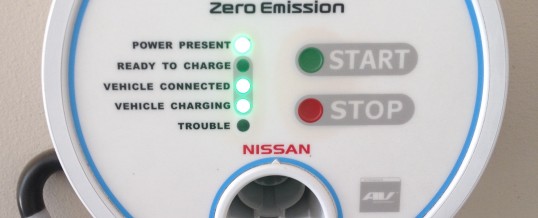
I’ve witnessed some pretty amazing technological advancements in my lifetime. But just when I think I’ve seen it all, I see something new that’s mind-boggling.
Recently, as my wife and I watched YouTube on our television, which in and of itself is pretty mind boggling, we came across a video about a proposed system whereby neighborhoods would be designed so that the streets would include wireless charging stations for electric cars.
When a car is finished charging, it would then make way for another car, which was waiting for its turn to charge. The cars would then be connected to your home to supplement the juice you use to run your coffee pot, stove, and anything else that uses electricity.
The most amazing thing about this design model was that the cars would drive themselves around and do all of this while you slept.
A planned, integrated neighborhood, with the electricity generated by solar, wind, hydroelectric, and other renewable energy sources.
What organization is proposing all of this? NASA?
Nope. Nissan.
That’s right. The car company.
About a year ago, we bought a Nissan Leaf. I’ve written about it in a previous column. It is an all-electric car. We have thoroughly enjoyed it.
It takes a few hours to charge, and has a range of about 85 miles, which is more than we need for daily use. It costs about $20 a month in electricity. Even with gas at $1.60 a gallon, we still come out ahead over a truck that gets 13 mpg, or even our Toyota Prius, which gets around 48 mpg.
We have been early adopters of some of the new technology. We bought our first hybrid car in 2003. Since then, we have purchased solar panels.
Solar panels used to be cost prohibitive, but now you can buy them most anywhere. The smaller systems can operate gates, or charge boat and lawnmower batteries, and have lots of other applications. Larger systems installed by certified professionals could generate most or all of what you use in your home.
In July of 1969, a 6-year-old boy in rural Arkansas watched man take his first step on the moon. At the time, it seemed as if we had reached the pinnacle of our scientific capabilities.
Today, I stand in awe of what we have. Computers have absorbed much of what we used to use: rotary phones, record players, cameras, movie cameras, voice recorders, and to a significant degree, even the Postal Service.
The Internet and social media have brought us back together with family and friends, many of whom we had lost touch with, and possibly would have never reconnected without the two.
In many ways, I’ve become an old fogey. I like my 1960 percolator and I get aggravated when I have to learn how to operate a computer software upgrade.
But I truly stand in awe at what our species has accomplished, and how the possibilities seem endless.
I wish that I could be here in 2069 to see what the 100 years since Neal Armstrong first stepped onto the surface of our moon will have brought our great-grandchildren.
©2016 John Moore
For more of John’s musings, visit johnmoore.net/blog
MAR
2016
